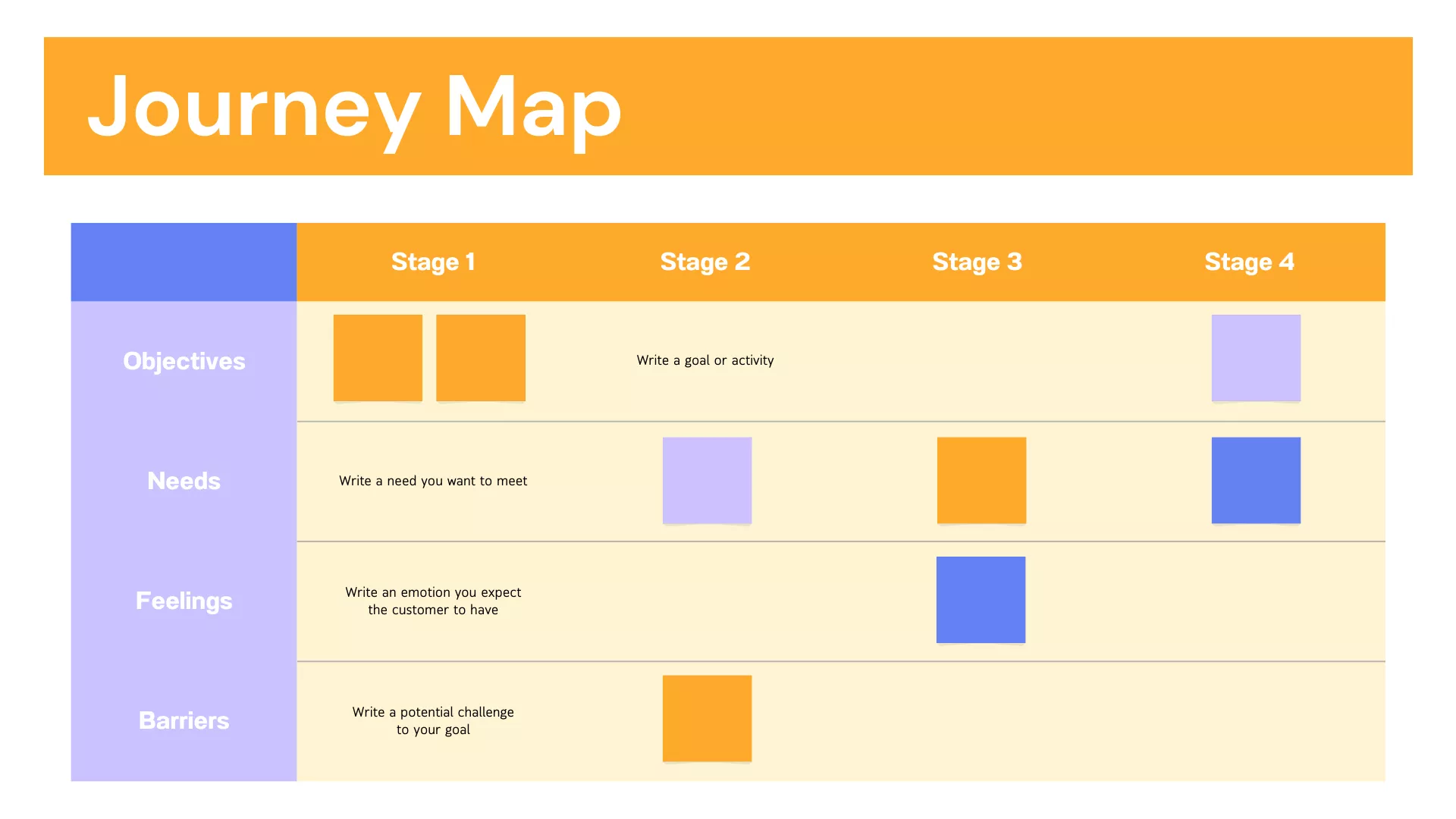A customer journey map (CJM) is a visual representation of the various stages and touchpoints a customer goes through when interacting with a brand through email. The map shows different steps, from the customer’s initial introduction to the brand to their final purchase and beyond.
In this article, we'll discuss why customer journey mapping is important in email marketing and how you can use it to build better customer relationships and increase your sales.
Contents:
- Understanding customer journey mapping and email marketing.
- Why customer journey mapping is important for email marketing.
- Steps for creating a customer journey map for email campaigns.
- Using customer data to improve your map.
- Finding pain points and opportunities along the journey.
- Creating emails for each stage of the journey.
- Learning from successful campaigns.
- Measuring success with customer journey data.
- Future trends in journey mapping.
Understanding customer journey mapping and email marketing
Think of customer journey mapping like drawing a picture — you want to sketch out the moment users first hear about your brand and how they go from there to becoming loyal customers.
Mapping is all about identifying different stages of the journey. For example, the stage when customers first learn about a brand, when they think about buying, and when they become loyal fans. The journey map captures all of their interactions with the brand at each stage.
By using mapping, you can create emails that meet the needs and wants of a customer at every stage of their journey. This makes email marketing more personal, builds better customer relationships, and leads to more sales.
Read the
Why is customer journey mapping important for email marketing?
Customer journey mapping is like having a treasure map for your email campaigns. It will give you a clear visual of the path to achieving your campaign goals. Journey mapping helps you:
- Create targeted emails. You can send emails that are specific to each stage of the customer journey and relevant to the customers’ interests. Customers are more likely to open targeted emails and take action.
- Understand your customers’ pain points. When you map the customer journey, you will see where customers might get stuck or dissatisfied. Mapping helps you solve these problems and improve the customer experience.
- Study your customers. Journey mapping helps you learn what your customers like and want. It makes you think about the purchasing process from the customer’s point of view.
- Stay ahead of the curve. When you know what your customers want, you can stay ahead of the competition by sending them exactly what they need.
Discover essential email marketing definitions in our glossary to enhance your campaigns!
How to create a customer journey map for email campaigns
Creating a customer journey map may seem daunting, but it's worth it. To create your map, start by following these simple steps:
- Study your customers. What do they like? What do they need? This will help you understand what they expect from your brand.
- Identify the different stages of the customer journey. For example, when people first learn about you, when they think about buying, and when they become loyal customers.
- Make a list of touchpoints. Write down all the times your customers interact with your brand at each stage. This could be through email, social media, or your website.
- Identify pain points and opportunities. Look at your map and think about where customers might have questions or difficulties and how you can improve their experience.
- Tailor your emails. Use the map to send emails that meet your customers’ needs at every stage. This makes your messages more relevant and engaging.
- Keep improving your map. Creating a customer journey map is not a one-time task. Review your map regularly and update it based on new information.
Where to get customer data to improve your journey map
Collecting and analyzing customer data will show you areas for improvement; it is like having a secret code to improve your journey map. Here are some ways to collect this data:
- Conduct surveys. They help you find out what customers like, dislike, or need.
- Track user behavior. Monitor how customers behave on your website and social media. This will show you what they are interested in, how they interact with your brand, and how they feel about your brand.
- Review your email marketing metrics. Check metrics like open rate (OR) and click-through rate (CTR). These will tell you which emails customers like and which they ignore.
- Gather feedback. Listen to what customers tell you directly. This will help you learn what they like and what needs to be improved.
An example of a customer survey
Using customer data to improve your map
The easiest way to get ideas for improvement is to listen to your customers.
Follow this algorithm when using feedback:
- Collect feedback. Conduct surveys and send out feedback forms. Ask customers about their experiences with email marketing.
- Analyze the feedback. Look for patterns in the feedback data. Find out what makes customers happy and what does not.
- Make changes. Customize your emails to meet your customers’ needs.
- Track results. Track engagement and sales metrics to determine the effectiveness of your changes.
Use customer feedback to improve your emails and create a stronger connection with your customers.
Finding pain points and opportunities along the journey
Every journey has its obstacles and growth points. There are several ways to look for obstacles in a customer journey:
- Imagine yourself as a customer, and think about what you will go through while interacting with your brand. Where do you feel confused or frustrated?
- Look at the path from start to finish. What can you do better?
- Use customer feedback, website analytics, and email metrics to see where customers are struggling and where things are running smoothly.
Here are some examples of potential obstacles in the customer journey and how to overcome them:
- Low brand awareness. Launch a welcome email campaign for new subscribers. Talk about the value of the product and offer subscribers unique discounts.
- Negative product reviews or ratings. To improve product ratings, launch a loyalty program that offers discounts or bonuses for positive reviews on the website or other platforms. Remind customers about this in emails.
- High product prices. Email personalized offers and discounts to customers based on their previous views or purchases.
- Concerns about product quality. Develop a series of newsletters that provide information about materials, specifications, and customer reviews to remove doubts and build trust.
Sometimes, email service providers fail to deliver your email. Read more about it in our post: Email Bounce Back: Strategies to Overcome Email Delivery Challenges
Creating emails for each stage of the journey
Sending the right message at the right time is like hitting the bull's eye. It doesn’t happen by accident — careful planning is required. Each stage of the journey requires different email sequences:
1. During the brand awareness stage, send emails that show what makes your brand special. Tell customers what you offer and why they should be interested in your products.
For example, send a welcome email that highlights the key features and benefits of the website. Or an onboarding email sequence that encourages them to explore the site and buy a product or service.
2. During the review stage, share recommendations and product reviews. Make customers feel confident about buying from you.
For example, send emails with step-by-step instructions on how to use your product or service. Provide customer support contact information in case they have any questions.
3. At the conversion stage, offer discounts or special offers to encourage customers to purchase.
For example, send promotional emails for Halloween and Black Friday and give discounts on future purchases.
4. During the retention stage, send emails that reward loyal customers. Offer exclusive content or discounts to keep them coming back.
For example, create a loyalty program and send emails with rewards for repeat customers. Show appreciation for their continued interest in your brand. Send invitations to a referral program with rewards for successful referrals. Make it easy for customers to share your service or products with others.
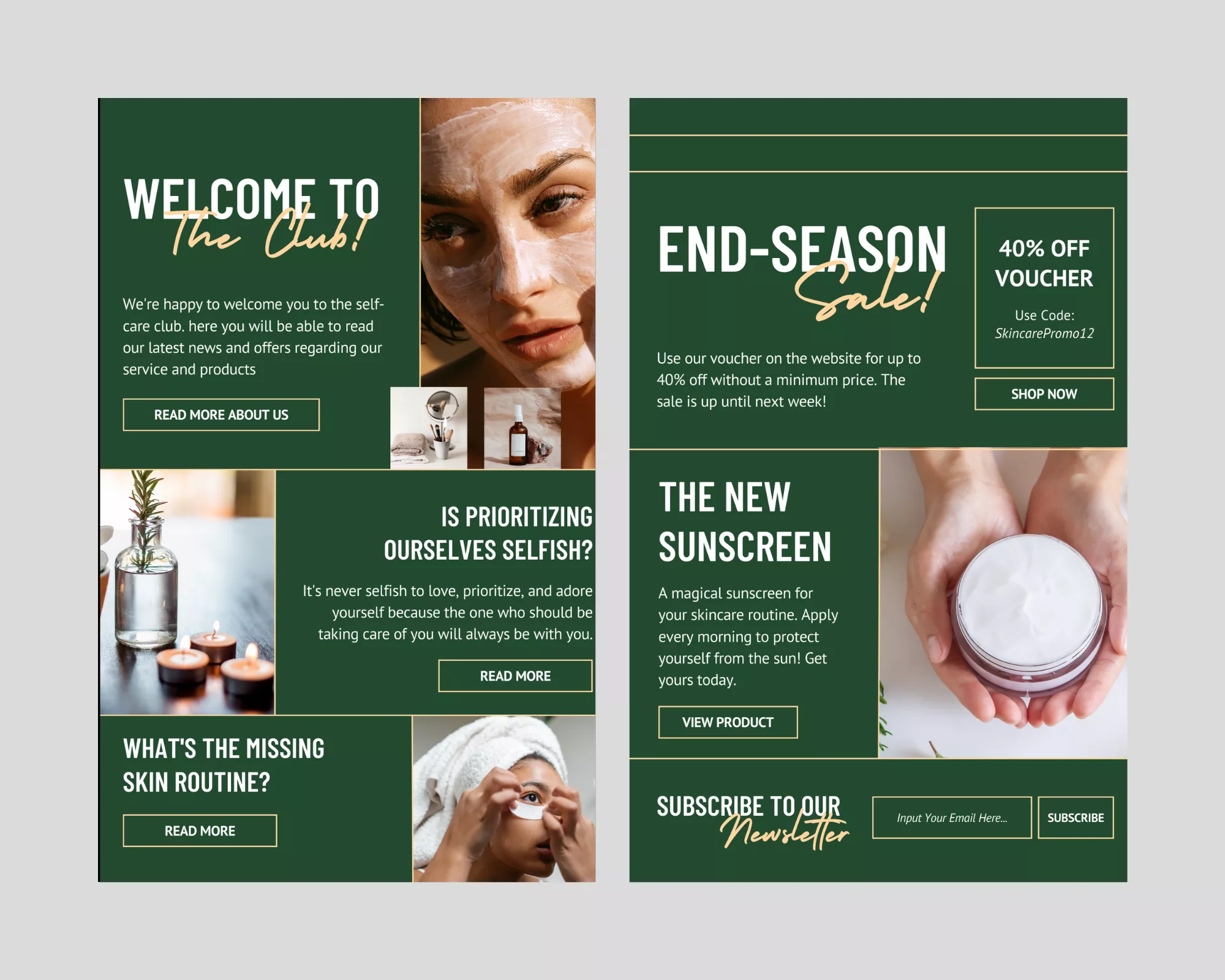
A welcome email used to build brand awareness
Examples of successful campaigns
Many brands have found success with customer journey maps. Here are a few examples.
Sephora
The company uses customer journey mapping to help customers find the right products. Their emails include customized recommendations and educational materials that improve the customer experience.
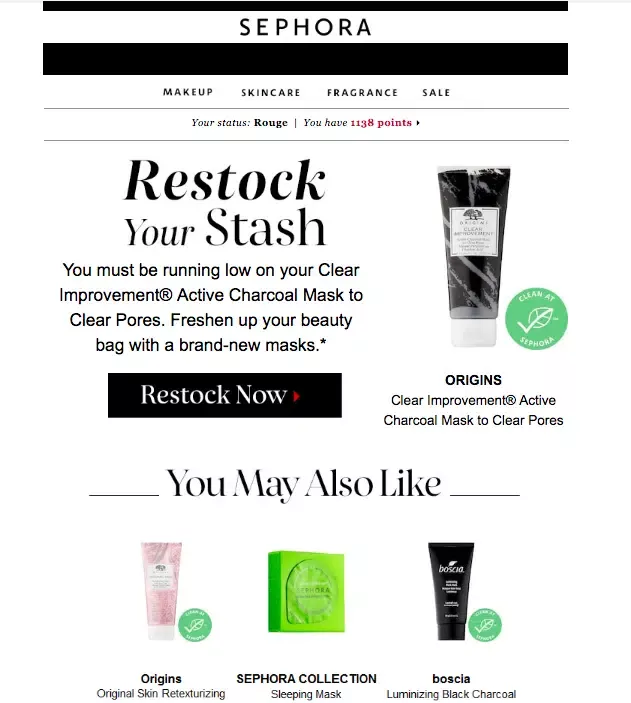
Trigger email based on customer orders
Airbnb
Airbnb uses customer journey maps to build trust with customers. The brand sends emails with host profiles, listing reviews, and local offers. This creates a strong sense of community and increases the number of bookings.
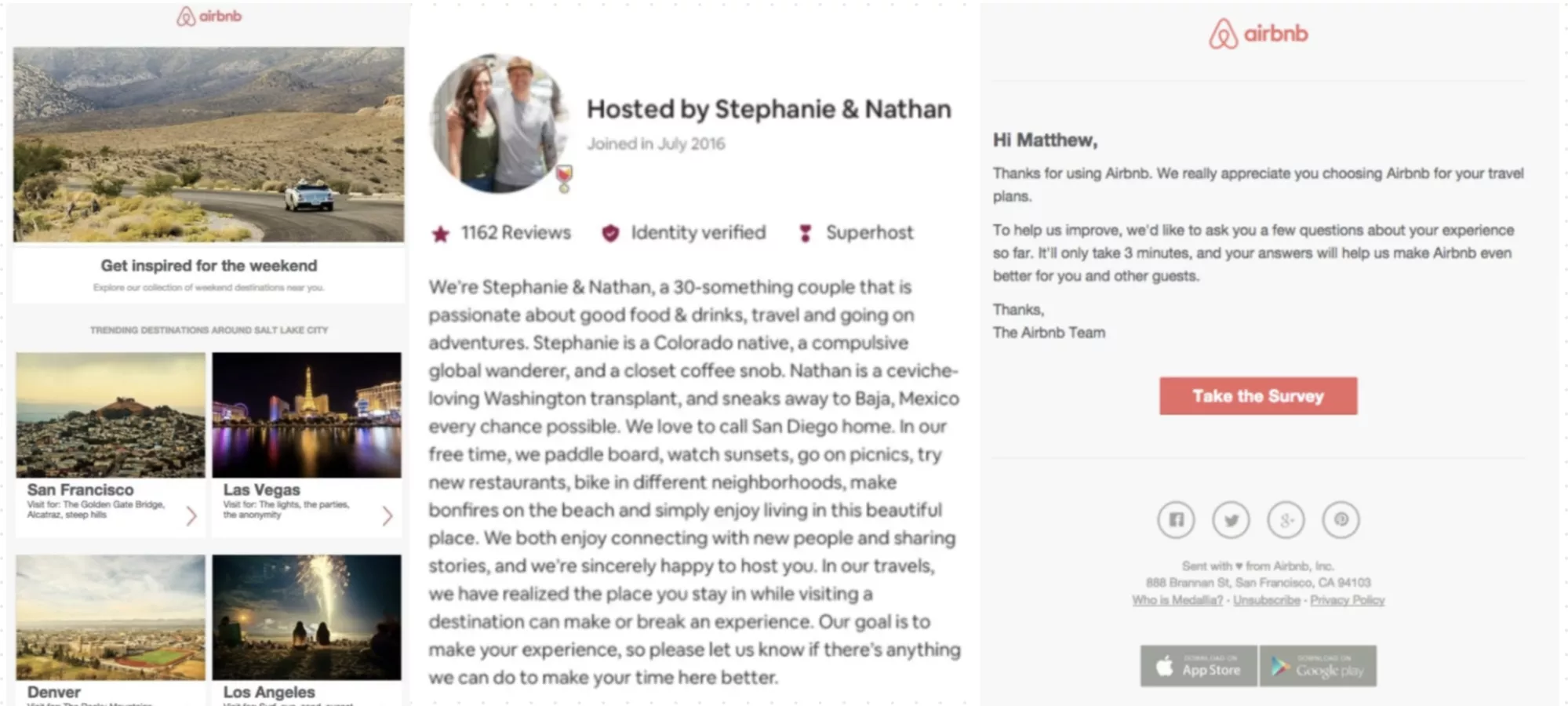
Examples of emails at different stages of a customer journey
The New York Times
The publication used customer journey mapping to manage content overload. The New York Times sends curated emails with the most important news tailored to what customers are interested in. This has improved subscriber engagement and retention.
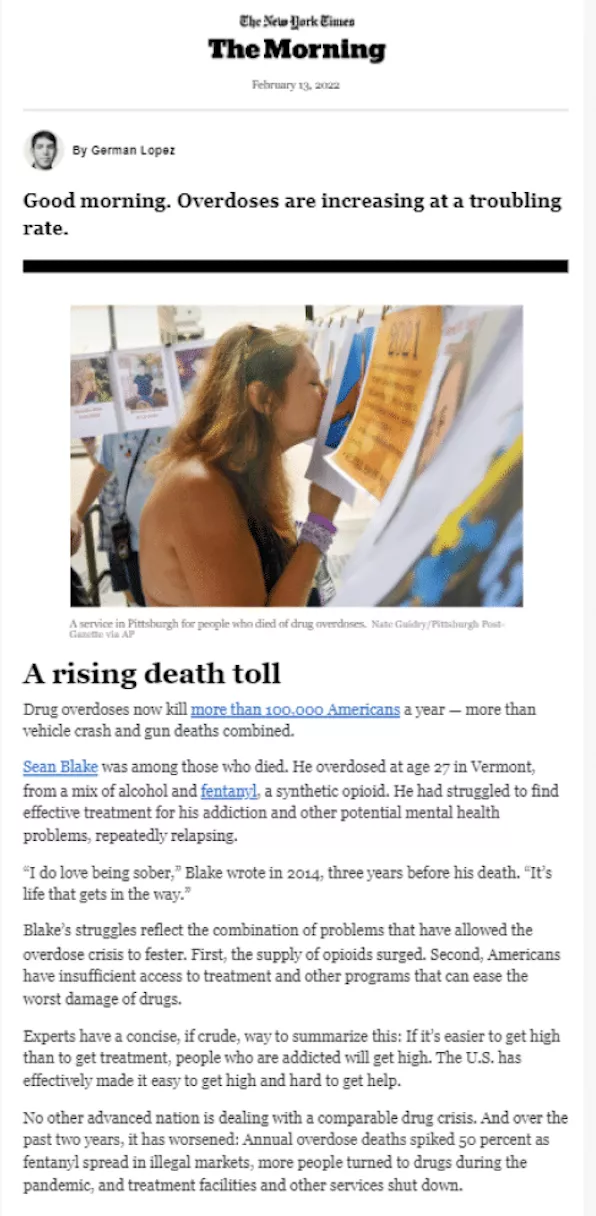
An email with the day's top news based on the customer's interests
These companies used journey mapping to understand their customers and create better emails. By studying their success, you can do the same.
Measuring success with customer journey data
The quality and success of the email campaign are measured by the following metrics:
- Open rate. See how many people open your emails. The rate indicates how interesting your subject line is.
- Click-through rate (CTR). See how many people click on the links found in your email. This is how you know if your content is engaging.
- Conversion rate. Measure how many people perform targeted actions after reading your emails. The conversion rate indicates whether your email marketing efforts are leading to sales.
- Revenue per email. Find out if your email campaigns are profitable.
By tracking these indicators, you will see what works and what needs improvement.
Future trends in journey mapping
The world of email marketing is changing all the time. There are several trends you should be aware of today:
1. Personalization. In the future, it will become even more important to write emails that give the impression of being written for each customer personally. Don't just include the customer's name in the email, but also tailor the content and offers based on their previous orders, interests, and personal preferences.
For example, if a customer has previously booked a trip to the mountains, send an email with a special offer for a mountain tour rather than a city tour. This approach makes your emails more attractive and useful to customers.
2. Automation. Use automation to send emails at predetermined times, and customer engagement will improve.
Once a customer signs up, you can automatically send a welcome email with details on how to sign up for your product or how to receive special offers. This makes the first contact more pleasant and helps you attract more customers.
3. Cross-channel integration. By integrating email with social media and other channels, you will make the customer journey more convenient. This means that customers can receive information from you not only in their email but also on social media or messenger.
For example, after a customer books a beauty treatment, you can send them a confirmation email and ask them to subscribe to your social media page to receive updates and tips about the treatment.
4. AI-based data analytics. By using AI to analyze customer data, you can create emails that really resonate with customers.
For example, based on a customer's booking history and browsing habits, AI can analyze which types of tours are more likely to meet their needs and interests. Based on this analysis, you can send your customers more accurate tour recommendations.
Read more about email marketing in our blog:
- What Is Email Marketing? A Complete Guide
- What is RFM Analysis, and How to Segment Customers?
- What is Direct Marketing, and How Can You Use It for Your Business?
Conclusions
- A customer journey map (CJM) is a visual representation of a customer's experience with a brand.
- Customer journey mapping helps you create emails that customers want to open, read, and engage with.
- To create a journey map, you need to:
- study your customers;
- identify the stages of the journey;
- list the touch points;
- find problems and opportunities;
- adapt your emails;
- improve the journey map.
- Use the journey map to create emails for each stage of the journey. Don't forget to incorporate practices like personalization, automation, integration, and AI.
- Learn from the mapping experience of well-known brands and apply it to your email marketing strategy.
Related Articles
Display Advertising Effectiveness Analysis: A Comprehensive Approach to Measuring Its Impact
In this article, I will explain why you shouldn’t underestimate display advertising and how to analyze its impact using Google Analytics 4
Generative Engine Optimization: What Businesses Get From Ranking in SearchGPT
Companies that master SearchGPT SEO and generative engine optimization will capture high-intent traffic from users seeking direct, authoritative answers
From Generic to Iconic: 100 Statistics on Amazon Marketing for Fashion Brands
While traditional fashion retailers were still figuring out e-commerce, one company quietly revolutionized how U.S. consumers shop for everything from workout gear to wedding dresses

